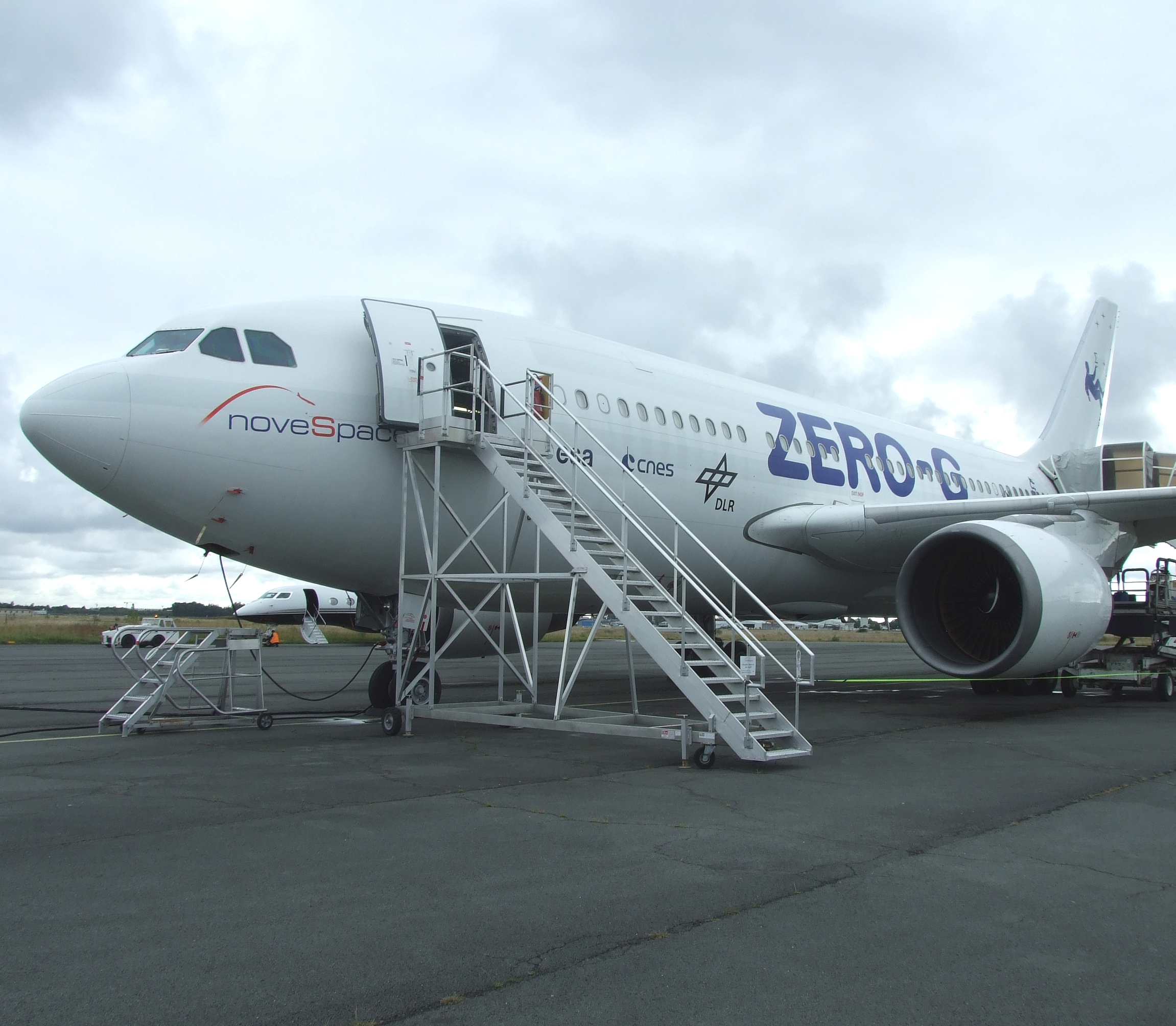
Why microgravity ?
Different from electrons and ions in classical plasmas, which are governed by electric and magnetic forces, in complex plasmas micrometer sized particles are 12 orders of magnitude heavier than atoms and are therefore strongly affected by gravity. In the early experiments, clouds of microparticles had a flat pancake shape or could even be made to form a two-dimensional monolayer.
For obtaining three-dimensional and homogeneous clouds of microparticles, gravity must be compensated by an additional force. In the laboratory, this must be a non-electric force, e.g. the thermophoretic force that appears in a gas that is heated at the bottom and cool at the top. On parabolic flights (or on an orbiting space station) it is the centrifugal force that balances gravity.
The German space agency, DLR, provides opportunities for experiments on parabolic flight with the ZERO-G aircraft, which is operated from Bordeaux airport. When the aircraft is injected into the parabolic flight segment, the residual gravity is below 0.05g for up to 20s. In one series, a sequence of 90 parabolas is provided, which gives the experimenter ample time to repeat his experiments or to change parameters. A flight campaign consists of three flight days and there are a few hours during the afternoon for maintenance or to make small modifications of the experimental device.
A few selected results
First, it was necessary to prevent the deposition of dust on the probe surface, which would falsify the ion current to the probe. This could be achieved by holding the probe for most of the time at a negative potential, which repels the dust. Attractive potentials were applied only for such short times that the dust inertia keeps the dust at bay. With this approach, it became possible to measure density and electron temperature profiles inside the dust cloud. Besides, we discovered the formation of a dust ring around the probe and explained the mechanism [Klindworth et al, Phys. Rev. Lett. 93, 195002 (2004) DOI].
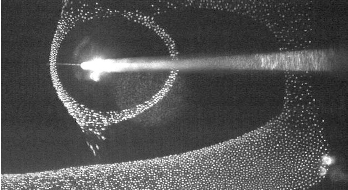
Each plasma that is in contact with electrodes or walls develops a density profile with a peak density in the center. The density gradient leads to ion diffusion downhill, which is further accelerated by electric fields created by electrons that rush even faster downhill. Hence, there is a directed ion flow that represents a source of free energy for the growth of dust density waves. This wave type is ubiquitous in bounded dusty plasmas. One surprising effect was that the most unstable wave can propagate at an oblique angle with respect to the ion flow direction [Piel et al, Phys. Rev. Lett. 97, 205009 (2006) DOI].
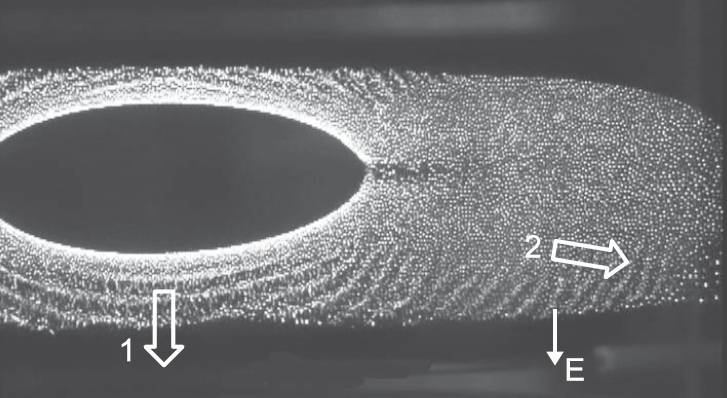
The inhomogeneous profile of plasma density should influence the local frequency of self-excited dust density waves. We have studied this effect by determining the frequency for each pixel in a movie of the dust density wave. Unexpectedly, the wave frequency does not vary continuously. Rather, domains of constant frequency form. This is a kind of nonlinear self-synchronization that is known from models of chains of coupled van-der-Pol oscillators. Neighboring domains have incommensurate frequencies, which cannot be represented by a ratio p:q with small numbers p and q [Menzel et al, Phys. Rev. Lett. 104, 235002 (2010) DOI].
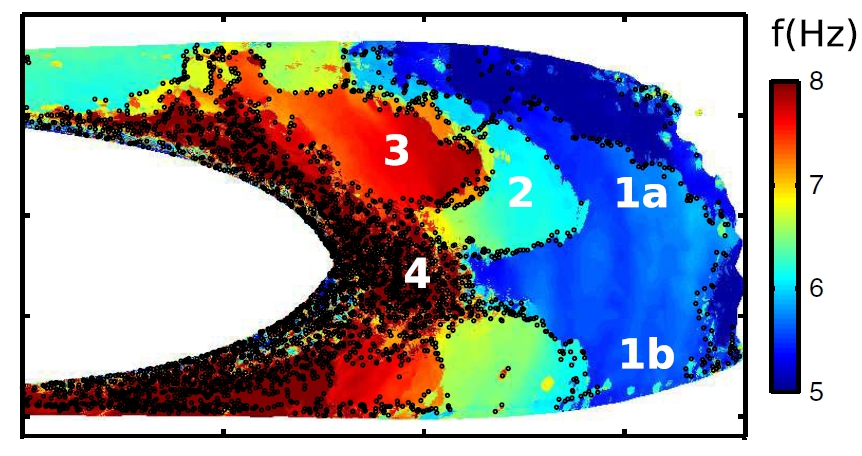
By means of a fast-spinning cogwheel single large microparticles are shot into a cloud of smaller microparticles. The projectile pushes the target particles aside and a drop-shaped dust-free space is formed behind the projectile. The length of this cavity is proportional to the speed of the projectile. The initial compression of the target cloud leads to a plastic deformation of the target cloud. The closure of the cavity, however, is due to the eleastic response of the cloud and proceeds at the dust sound speed. [Caliebe et al, Phys. Plasmas 18, 073702 (2011) DOI].
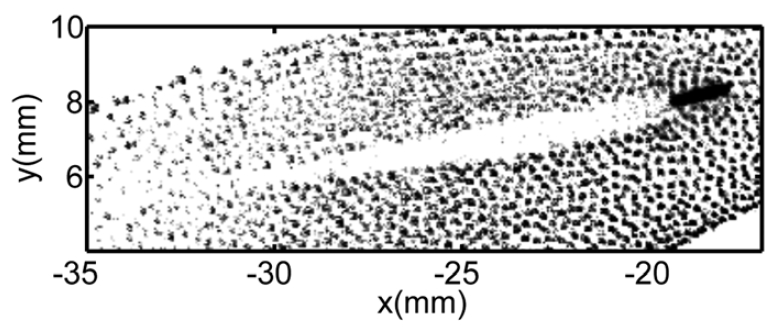
Why is there a hole in the center of the dust cloud?
Besides exciting collective motion in terms of dust density waves, the downhill flow of ions exerts a drag force on dust particles, which pushes them outwards. There is also an opposing force from the electric field. The ion speed increases from the plasma center to the wall because of the rising electric field. However, the ion drag force decreases for increasing ion speed (because it gets ever more difficult to bend an ion trajectory). Therefore, near the plasma center, the ion drag force is stronger than the electric field force that pushes the negative dust particle inwards. At some point on the way outwards, both forces are equal. This is roughly the position of the edge of the dust void. Farther outside, the electric field force wins and pushes the dust inwards. A more detailed analysis must take into account that all dust particles repell each other. This represents an electrostatic pressure, which shifts the void edge somewhat further to the center than predicted by the force balance for a single particle predicts.